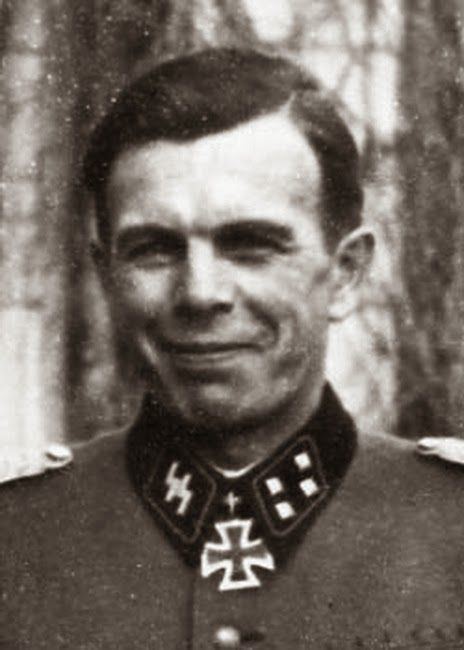Nickname(s) Zenz Years of service 1927–45 Name Vinzenz Kaiser Service/branch Waffen-SS | Allegiance Nazi Germany Battles/wars World War II Battles and wars World War II Rank Obersturmbannfuhrer | |
 | ||
Born 28 February 1904
Waltersdorf, Duchy of Styria, Austria-Hungary now Judenburg, Styria, Austria ( 1904-02-28 ) Awards Knight's Cross of the Iron Cross
Iron Cross 1st Class
Iron Cross 2nd Class
Close Combat Clasp in Gold
Infantry Assault Badge in Silver
Tank Destruction Badge
Wound Badge in Silver Died April 20, 1945, Bavaria, Germany Unit 2nd SS Panzer Division Das Reich | ||
Vinzenz Kaiser (28 February 1904 – 20 April 1945) was an Obersturmbannfuhrer (Lieutenant Colonel) in the Waffen SS during World War II who was awarded the Knight's Cross of the Iron Cross. It was awarded to recognize extreme battlefield bravery or successful military leadership by Nazi Germany during World War II.
Contents
Early Iife
Vinzenz Kaiser was born on the 28 February 1904 in Waltersdorf near Judenburg.
After Kaiser finished his education, he was employed in a hardware store. He was also active in the efforts to bring Austria into the greater German Reich, forming a SA (Storm Troop) unit in 1927 and four years later being made the commander with the rank of Sturmfuhrer (Second Lieutenant) of Schutzstaffel (SS).
After the attempted coup in Austria failed (July 1934) he fled the country to Bavaria, where he joined the Austrian Legion and later joined the SS-Verfugungstruppe, he attended the SS-Junkerschule and was given the rank of Untersturmfuhrer (Second Lieutenant). He was initially posted to the Leibstandarte SS Adolf Hitler in Berlin.
He took part in the Anschluss of Austria, in 1938 as a company commander in the SS-Standarte Der Fuhrer.
World War II
The SS-Standartes were later converted into infantry regiments, Der Fuhrer became part of the new Das Reich Division, which participated in Polish Campaign, the Battle of France, the invasion of the Balkans (Operation Marita), and the invasion of the Soviet Union in the Operation Barbarossa.
Shortly after fighting in the vicinity of Waluki, he received command of the SdKfz 4 (Armoured) III. Battalion of the Der Fuhrer Regiment. He was awarded four Tank Destruction Badges. He was promoted to Hauptsturmfuhrer (Captain) and awarded the Knight's Cross of the Iron Cross in April 1943.
In 1944 Kaiser was promoted to Obersturmbannfuhrer (Lieutenant Colonel) and posted to the SS Panzergrenadier-Lehr Regiment (Panzer-Lehr-Division), training regiment, which in March 1944 was sent to join the 16th SS Panzer Grenadier Division RFSS which was then used in the occupation of Hungary.
In May 1944, Kaiser and his regiment was relocated to the Ligurian coast in Italy, in an attempt to counter the expected Allied landings at Piombino, Cecina and Livorno.
In June 1944 Kaiser was transferred to the 17th SS Panzer Grenadier Division Gotz von Berlichingen, for the battles in Normandy and the retreat across the Rhine and back to Nuremberg. Kaiser died on the night of April 19–20, 1945.
Awards
According to Thomas, Kaiser received the Knight's Cross of the Iron Cross with Oak Leaves on 18 April 1945 as SS-Obersturmbannfuhrer and commander of the SS-Panzergrenadier-Regiment 38. The 17th SS Panzergrenadier Division Gotz von Berlichingen had received a radio message on 28 April 1945 which stated that Kaiser had received the award on 18 April. This is documented in the war diary of the division. This claim is not supported by Fellgiebel nor Scherzer.
